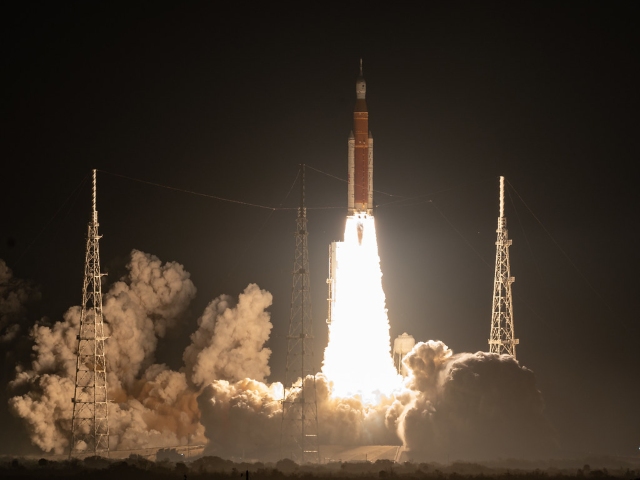
-
Karoo For The Win – Matjiesfontein Assisting NASA In Getting Humans Back To The Moon
11 Jan 2023 by Tayla in America, Lifestyle, South Africa, Space, Tech/Sci
[imagesource: Flickr]
Once upon a time, South Africa was home to a ground tracking station that played a critical role in NASA’s Apollo missions, which succeeded in preparing and landing the first humans on the Moon.
That station was located at Hartebeesthoek outside Johannesburg in the 1960s.
Now, South Africa has once again been brought into the fold, assisting the US’ Artemis missions aiming to return humans to the lunar surface.
It’s a big win for the Karoo that the South African National Space Agency (SANSA) and NASA have renewed their partnership in lunar exploration.
The Daily Maverick reports that the new deep space ground tracking station will be built at Matjiesfontein in the Central Karoo District of the Western Cape to assist in this new mission:
The antenna will be one of several 18- to 24-metre communications antennas placed strategically around the globe to ensure near-continuous connectivity between astronauts on Nasa’s Artemis spacecraft and those who will subsequently come to work on and around the lunar surface.
Raoul Hodges, managing director of the South African National Space Agency (Sansa) Space Operations, says a Deep Space Network has the ability to communicate with spacecraft, humans, probes and any other object that is beyond low-Earth orbit in space. Sansa intends to put up one antenna in 2024.
Hodges says that SANSA is also planning to put other smaller antennas up, such as 3,7-metre and 7,3-metre antennae for research and Earth observation data.
SA’s ground-tracking antenna will watch all the NASA missions planned in the 40-year Artemis programme, including payloads, probes, and human missions to the Moon:
“To track these payloads, they need to be visible to the antenna. Therefore, there will be at least three to five stations worldwide to have visibility and backup in case of failures.
“When a rocket is launched from a particular launch site, Sansa is normally first in line to acquire the rocket and download the telemetric data. This enables the owner to know whether the payload is on the right track and determines the health thereof.
“Thereafter, we track it when visible and relay the data to the owner of the payload till the end of mission,” he says.
The Artemis mission, named after Apollo’s twin sister, will be pretty legendary as it will land the first woman and first person of colour on the Moon.
Besides setting up a long-term lunar presence, Artemis will also add to the building blocks needed to send astronauts to Mars.
It is pretty cool that a huge antenna in the Karoo will be tracking the astronauts bound to make Moon/Mars history.
[source:dailymaverick]
Latest News
-
Game, Seth, Match – Goodbye 2024
Hey Guys - thought I’d just give a quick reach-around and say a big thank you to our rea...
-
Breakfast Of Champions: Hollywoodbets Kenilworth Racecourse Breakfast Gallops Is Back!
[imagesource:CapeRacing] For a unique breakfast experience combining the thrill of hors...
-
Need NYE Plans? Cafe Caprice’s Night Of Enchantment Masquerade Party Could Do The Trick
[imagesource:howler] If you're still stumped about what to do to ring in the new year -...
-
Buckingham Palace Steps In After Staff Christmas Party Spirals Out Of Control
[imagesource:maxandeli/facebook] It's not just in corporate that staff parties get a li...
-
Designer Babies Are Running Into Trouble As Teens, Grappling With Being ‘Experiments’
[imagesource:here] Imagine being born with the weight of your parents’ version of per...
-






























